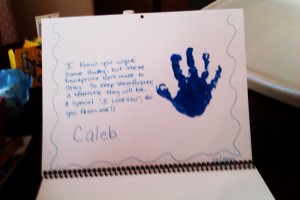4 Ways to Manage Your Pre-Tween's Unpredictable Behavior

"At 7 and 8, a child's brain is in the midst of huge shifts," explains Caron Farrell, M.D., Ph.D., a child and adolescent psychiatrist at the Seton Mind Institute, in Austin. "It's almost as if children this age see how older kids and adults act, and want to behave that way—but after a certain amount of time their brain says, 'I'm done!' " Plus, while they have the physical power to handle all sorts of tasks, their mental abilities and concentration still lag. We'll help you and your kid through this frustrating time.
Increase Responsibility
New chores will help bolster his concentration skills and give him the confidence he needs to move into the tween years, says Russell Reiff, M.D., a developmental pediatrician at Kaiser Permanente in San Francisco. Brainstorm responsibilities that you both think he might be able to handle, such as packing his lunch, folding his laundry, or cleaning his room. Praise his effort—not the end result. "A 7-year-old isn't going to put away his clean clothes as neatly as you would, at least at first, but the point isn't perfection, it's skill-building," says Dr. Reiff.
If your child suggests a task that isn't safe for kids his age—like making pancakes on the stove or walking to the park on his own—don't dismiss his idea with "you're not old enough yet." Instead, tell him why the task is unsafe and when the two of you could discuss it again.
Rethink Routines
You might think that your child is too old for routines and that she should be able to handle bedtime or getting ready for school without constant reminders from you. But she needs structure now even more than ever. That's because her "executive function" skills—the ability to organize and break down the steps of a task—are still maturing. They're only slightly more advanced than they were at age 5 or 6, although her responsibilities have grown far more complex than they were in kindergarten, says Dr. Farrell.
For instance, Lauren Spataro, of Darien, Connecticut, had to keep tabs on her 8-year-old daughter, Gracie, for several weeks before she got the hang of her new after-school routine. "In the beginning of the school year, I'd talk her through opening her backpack, taking out her lunch box and throwing away trash, putting the reusable containers in the sink, and getting her homework out of her binder," she says. "Now she knows the drill, but I was surprised by how long it took to get there." One strategy to help a child commit a routine to memory: Have her write down each step—and post the list in her bedroom or on the fridge.
Encourage Empathy
Up until this point, kids have still been pretty egocentric. Suddenly, they develop a greater ability to put themselves in other people's shoes. "This marks a huge leap in their moral development," says Dr. Farrell. "No longer do they obey rules just because they don't want to be punished. Now they obey rules because they don't want to hurt other people's feelings or—more important—they want other people's approval, especially that of their teachers."
To promote this behavior, Dr. Farrell suggests praising your child when he does something kindhearted, whether it's pushing his little sister on the swings at the park or holding the door open for another family at the mall. It's also a good time to help a charity. For instance, you could ask him to choose between collecting clothing donations for a homeless shelter or selling hot chocolate at a yard sale to raise money as a family for the local children's hospital.
Play Together
In public, your 8-year-old may not even want you to stand next to her, but don't assume she feels the same way at home. In fact, kids this age still enjoy spending time with their parents, says Dr. Reiff. Change your family activities so they seem more "grown-up" to your child. For instance, swap Chutes and Ladders for Uno, or instead of reading a single story at bedtime, tackle a chapter of a book like Harry Potter and the Sorcerer's Stone or Charlie and the Chocolate Factory, which your child might not be up to reading on her own.
Originally published in the November 2012 issue of Parents magazine.

























